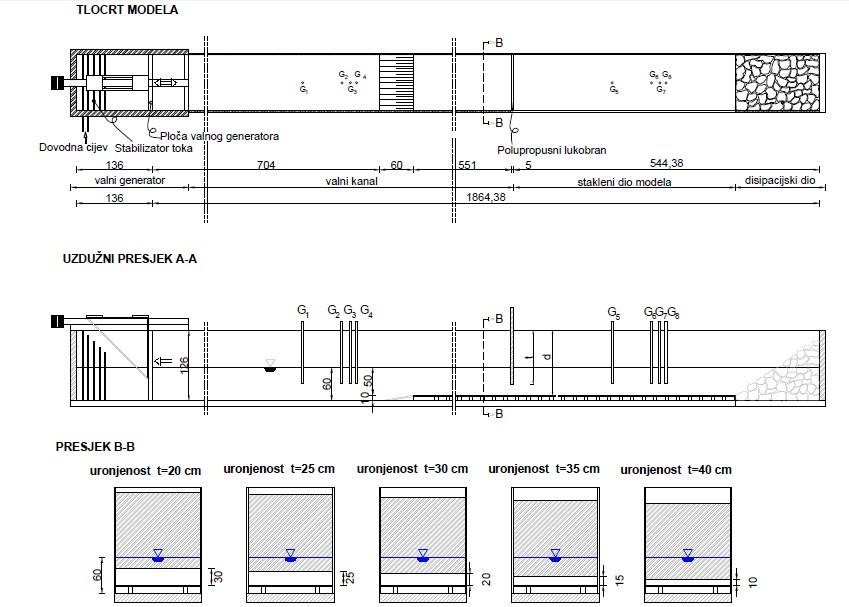Objectives and goals
The use of permeable breakwaters with submerged vertical panels enables the circulation of the seawater beneath the breakwater, but the vertical panels should be also immersed deep enough to prevent excessive wave energy transmission. Upon the occurrence of large significant wave height waves, in conjunction with the transmission of the wave energy underneath the breakwater, there could also be wave energy transmission due to overtopping. The breakwater designers should take both into consideration when calculating the breakwater functionality. These types of breakwaters are applied to locations with a weak wind wave climate (fetch sizes of less than 10-20 km) due to the threat of significant wave energy transmission, which could prevent regular operations inside the marina or harbour basin. This type of permeable breakwater can be applied on the entire length of the breakwater or only as a smaller part that would allow greater seawater exchange.

